Edge computing in IoT is revolutionizing the way data is processed and analyzed by bringing computational power closer to the devices and sensors. The hardware used in edge computing plays a crucial role in enabling this paradigm shift, offering improved latency, privacy, security, scalability, and cost savings.
From servers and processors to switches, routers, CPUs, GPUs, FPGAs, memory, and storage, the components of edge computing hardware are purpose-built to handle the specific requirements of edge computing.
But what are the key considerations when selecting edge computing hardware? How does it impact businesses and their operations? And what are the security and certification requirements that come into play?
In this discussion, we will explore these questions and delve into the fascinating world of edge computing hardware, uncovering its significance and its potential to reshape the IoT landscape.
Key Takeaways
- Edge computing hardware enables efficient data processing at the edge, providing enhanced latency, privacy, security, scalability, and cost savings.
- Specialized hardware, such as CPUs, GPUs, FPGAs, and modern memory technologies, are required for resource-intensive edge computing applications.
- Edge computing hardware reduces latency, enhances data privacy, and provides an additional layer of security.
- Businesses can scale their edge computing capabilities by deploying additional hardware, reducing costs by processing data locally and reducing dependency on external servers.
Role of Edge Computing Hardware
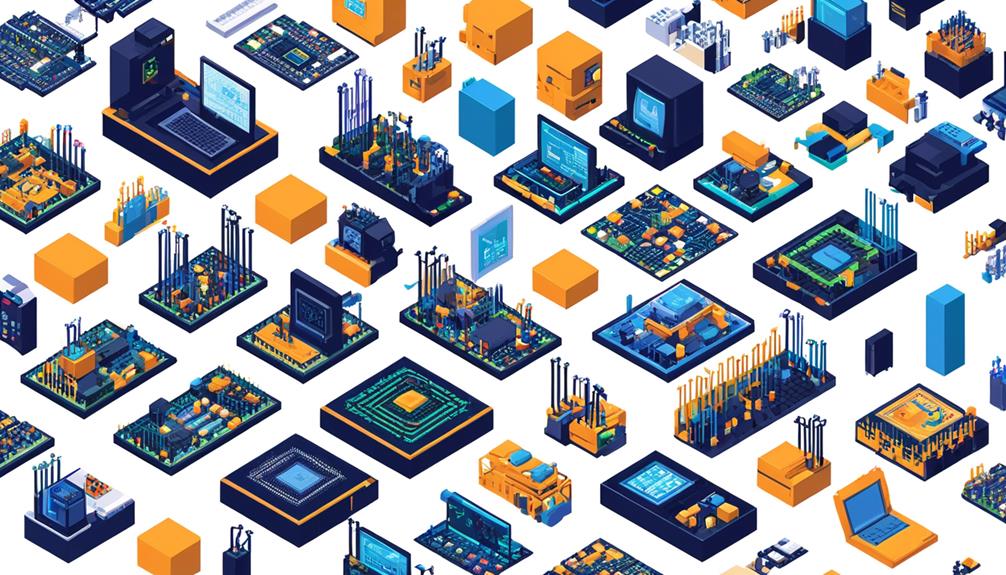
The role of edge computing hardware is crucial in enabling efficient data processing at the edge, providing enhanced latency, privacy, security, scalability, and cost savings.
Edge computing refers to the paradigm of processing data closer to the source, rather than relying solely on centralized cloud computing. This approach is particularly relevant for IoT devices that generate massive amounts of data in real-time, requiring immediate analysis and response.
To effectively process data at the edge, specialized hardware is required. Resource-intensive edge computing applications demand powerful hardware designed specifically for use at the edge. These hardware components provide the necessary processing power and storage capacity to handle the influx of data generated by IoT devices.
Servers play a vital role in edge computing, acting as the backbone of the infrastructure. They are responsible for processing and analyzing the data received from IoT devices, enabling real-time decision-making. Processors, such as CPUs and GPUs, are essential for executing compute-intensive tasks quickly and efficiently, ensuring low latency and high performance.
Additionally, switches and routers are crucial components for effective edge computing. They facilitate the efficient transfer of data between devices and the edge computing infrastructure, optimizing network connectivity and reducing latency. These hardware components work together to create a robust and reliable edge computing environment, capable of handling the demands of IoT applications.
Businesses looking to leverage edge computing should consider investing in the appropriate hardware. By utilizing specialized edge computing hardware, organizations can achieve faster data processing, reduced network congestion, improved data privacy and security, and cost savings. The right combination of hardware components ensures that data is processed and analyzed at the edge, closer to the source, enabling real-time insights and actionable intelligence.
Importance of Edge Computing Hardware
Edge computing hardware plays a critical role in enabling efficient data processing at the edge, offering improved latency, privacy, security, scalability, and cost savings.
The importance of edge computing hardware can be understood through the following points:
- Latency: Edge computing hardware allows for data processing close to devices and sensors, reducing the time it takes for data to travel to central data centers or the cloud. This enables faster processing and response times, critical for applications that require real-time decision-making, such as AI-based systems.
- Privacy: By processing data at the edge, edge computing hardware ensures that sensitive information can be processed locally without being transmitted to external servers. This enhances data privacy and reduces the risk of data breaches.
- Security: Edge computing hardware provides an additional layer of security by minimizing the exposure of sensitive data to external networks. With data processing happening locally, potential security vulnerabilities from transmitting data to the cloud or central data centers are reduced.
- Scalability: Businesses can scale their edge computing capabilities by deploying additional edge computing hardware as needed. This allows for distributed processing across multiple devices, ensuring that the system can handle increasing data volumes and computational demands.
- Cost savings: Edge computing hardware reduces the dependency on central data centers and cloud services for data processing. By processing data locally, businesses can save on bandwidth costs associated with transmitting large amounts of data to external servers.
Components of Edge Computing Hardware
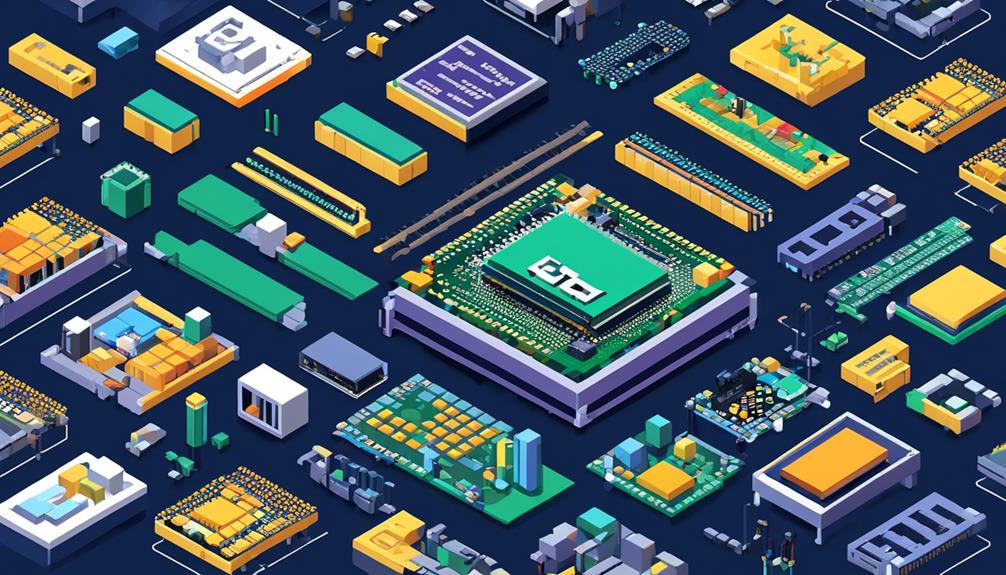
With a focus on the hardware aspects, the discussion now turns to the key components that make up edge computing infrastructure. Edge computing is a distributed computing paradigm that enables processing data locally, at or near the source of data generation. This approach reduces the need to transmit large amounts of data to the cloud, resulting in lower latency and improved response times.
CPUs (Central Processing Units) are a fundamental component of edge computing hardware. They provide the computing power required for executing instructions and determine the overall system performance. Modern CPUs designed for edge computing often include additional features such as AI accelerators and low power consumption to meet the specific requirements of edge deployments.
GPUs (Graphics Processing Units) play a crucial role in edge computing by enhancing performance, enabling large-scale data storage in limited space, and supporting AI applications. They excel at parallel processing, making them ideal for handling intensive computational tasks.
FPGAs (Field Programmable Gate Arrays) are another important component of edge computing hardware. These hardware accelerators can be programmed for specific tasks, allowing for high-speed processing and efficient resource utilization. FPGAs are particularly useful in scenarios where low latency and real-time performance are critical.
Memory is an essential component for edge computing as it enables storing applications and data on devices. By reducing the need for frequent data transfers, memory reduces latency and improves response times. Additionally, modern memory technologies like non-volatile memory provide fast access to large amounts of data, further enhancing edge computing capabilities.
Types of Edge Computing Hardware
When considering the types of edge computing hardware, two important factors to consider are the processor options and connectivity requirements.
The choice of processor will determine the processing power and capabilities of the edge device. This is important because the edge device needs to be able to handle the computational requirements of the applications running on it. Different processors have different capabilities, such as the number of cores, clock speed, and power consumption.
On the other hand, the connectivity requirements will dictate the type of hardware needed to ensure smooth communication and data transfer between devices. This is important because edge devices are often part of a larger network and need to be able to communicate with other devices and the cloud. The connectivity options can include wired connections such as Ethernet or USB, or wireless connections such as Wi-Fi, Bluetooth, or cellular networks.
Both of these aspects are crucial in designing an effective edge computing infrastructure that can handle the demands of IoT applications. The choice of processor and connectivity options will depend on the specific requirements of the application and the environment in which the edge device will be deployed. Therefore, careful consideration should be given to these factors to ensure that the edge computing hardware is suitable for the intended use case.
Processor Options
To efficiently process resource-intensive edge computing applications, it is crucial to consider the various types of processors available for edge computing hardware.
The following are some of the processor options for edge computing:
- CPUs: Central Processing Units are the most common processors used in edge computing hardware. They provide general-purpose computing power and are suitable for a wide range of applications.
- GPUs: Graphics Processing Units are ideal for edge computing tasks that require parallel processing, such as video rendering and machine learning.
- FPGAs: Field-Programmable Gate Arrays offer hardware acceleration capabilities and are highly customizable, making them suitable for edge computing applications that require low latency and high-performance computing.
- AI Accelerators: Modern processors often feature built-in AI accelerators, enabling edge devices to perform machine learning tasks locally, without relying on cloud resources.
- Low Power Consumption: Edge computing hardware processors are designed to be power-efficient, ensuring optimal performance while minimizing energy consumption.
Connectivity Requirements
Connectivity requirements for edge computing hardware encompass the essential components that enable seamless communication and efficient data processing at the edge. Edge computing hardware facilitates data processing close to devices and sensors, reducing latency, enhancing privacy and security, and providing scalability and cost savings.
To ensure smooth communication and data processing, businesses need specialized edge computing hardware, including servers, processors, switches, routers, and nodes. These components work together to run resource-intensive applications effectively at the edge.
Benefits of Edge Computing Hardware
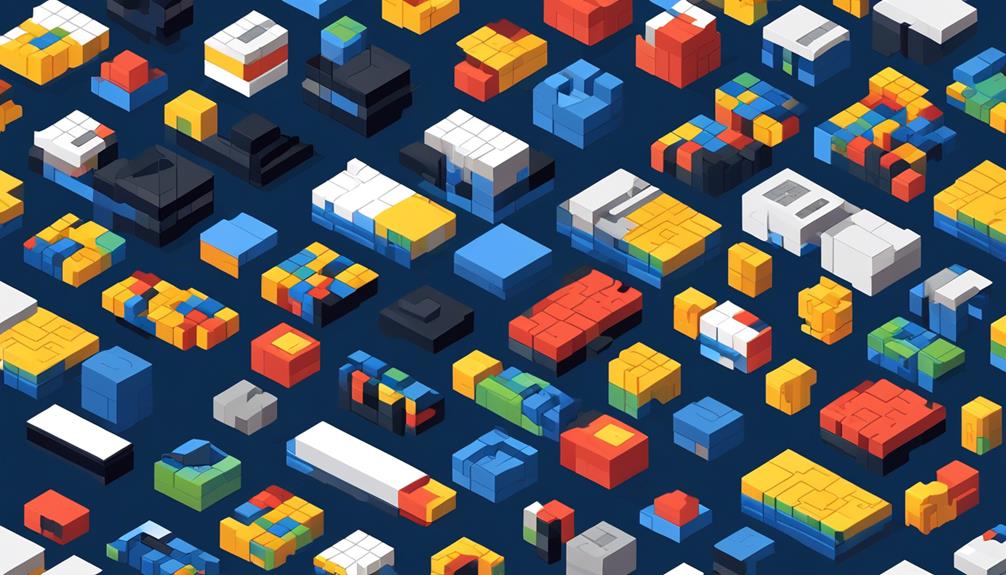
Edge computing hardware offers several benefits in the realm of IoT.
Firstly, it enables efficient data processing, allowing for faster response times and real-time analytics. This is particularly important in scenarios where latency needs to be minimized, such as in autonomous vehicles or industrial automation.
By processing data on-site, edge computing hardware also enhances security and privacy, as sensitive information remains within the local network, reducing the risk of data breaches.
Additionally, edge computing hardware improves reliability by reducing dependency on network connectivity and lowers bandwidth costs by limiting data transfer.
Efficient Data Processing
Efficient data processing is a key benefit of edge computing hardware. It enables close proximity to devices and sensors, resulting in improved latency, privacy, security, scalability, and cost savings.
Edge computing hardware is specifically designed to handle resource-intensive applications at the edge. This reduces reliance on central data centers and cloud services. By processing data locally, edge hardware enables faster processing and improved performance, especially for applications with high volumes of data.
Low latency and sufficient storage capacity are crucial for effective edge hardware. Endpoints require specific modifications and optimizations to effectively integrate into an edge system.
The benefits of efficient data processing offered by edge computing hardware make it an ideal solution for various applications and use cases in the IoT ecosystem.
- Improved latency
- Enhanced privacy and security
- Scalability
- Cost savings
- Reduced reliance on central data centers and cloud services.
Real-Time Analytics
Real-time analytics is a significant advantage offered by edge computing hardware, enabling faster response times and improved decision-making capabilities. By processing data on-site with edge computing hardware, businesses can achieve lower latency, increased security, and improved reliability. This is especially crucial in scenarios where high-speed data processing is required, such as analyzing sensor data in real-time. Edge computing hardware ensures that data processing is closer to the source, reducing the need for data transfer and minimizing latency issues.
To better understand the benefits of edge computing hardware for real-time analytics, let's consider the following table:
| Benefits | Explanation |
|---|---|
| Reduced Latency | Edge computing hardware enables processing units to analyze data locally, minimizing delays. |
| Increased Security | By keeping data on-site, edge computing hardware enhances security and privacy. |
| Improved Reliability | Limiting data transfer reduces the risk of network failures, resulting in improved reliability. |
The combination of reduced latency, increased security, and improved reliability provided by edge computing hardware makes it a valuable asset for businesses seeking to leverage real-time analytics and make faster, more informed decisions.
Trends in Edge Computing Hardware
The emergence of advanced hardware components is driving the evolution of edge computing in the IoT industry. As the demand for real-time analytics and low-latency applications increases, businesses are turning to edge computing hardware to process data closer to the source. Here are some trends in edge computing hardware:
- Specialized Components: Edge computing hardware refers to specialized physical components designed to run applications at the edge. These components include servers, processors, switches, and routers, all optimized for efficient and reliable edge computing.
- Reduced Reliance on Centralized Data Centers: Edge hardware reduces the reliance on centralized data centers and cloud services. By processing data at the edge, businesses can achieve faster processing and improved performance, as well as reduced network congestion and lower latency.
- Improved Latency: Edge computing hardware enables processing data closer to the devices and sensors, reducing the latency associated with sending data to centralized data centers. This is particularly beneficial for applications that require real-time analytics and low-latency responsiveness.
- Enhanced Privacy and Security: Edge computing hardware provides enhanced privacy and security by keeping sensitive data local. This eliminates the need to transmit data to centralized data centers, reducing the risk of data breaches and ensuring compliance with data protection regulations.
- Scalability and Cost Savings: Edge computing hardware allows for distributed processing, enabling businesses to scale their applications based on demand. This flexibility not only improves scalability but also helps reduce costs by optimizing resource utilization.
Future Outlook for Edge Computing Hardware

The future of edge computing hardware lies in its increased integration into everyday devices, enabling faster access to data and higher levels of security. As the amount of data generated by IoT devices continues to grow exponentially, edge computing systems are becoming more critical in reducing latency and improving the overall efficiency of data processing. To meet these demands, there is a shift towards customized hardware solutions for unique edge computing use cases, enabling improved operational efficiency and accuracy.
In the future, edge computing hardware will need to possess greater computing power to handle the increasing complexity of applications. This will require the development of more powerful and efficient hardware components, such as processors and memory modules, capable of handling large volumes of data and performing complex computations. Additionally, advancements in artificial intelligence (AI) will play a significant role in optimizing edge computing systems, enabling them to autonomously analyze and process data in real-time.
To cater to diverse environments, rugged edge computers are being specifically designed to withstand volatile conditions, offering a high level of durability and reliability. These devices will play a crucial role in industries such as manufacturing, oil and gas, and transportation, where edge computing systems need to operate in harsh and remote locations.
In summary, the future of edge computing hardware is poised for significant advancements. The integration of edge computing into everyday devices, along with the development of more powerful and efficient hardware, will revolutionize the way data is processed, analyzed, and utilized. As the world moves towards a more connected and intelligent future, edge computing hardware will continue to play a crucial role in the evolution of the Internet of Things (IoT) and the future of smart technologies.
| Future Outlook for Edge Computing Hardware | |
|---|---|
| Integration into everyday devices | Enables faster access to data and higher levels of security |
| Customized hardware solutions | Improve operational efficiency and accuracy |
| Increased computing power | Handles large volumes of data and complex computations |
| Rugged edge computers | Designed for volatile environments, offering durability and reliability |
Impact of Edge Computing Hardware on Businesses
Edge computing hardware plays a pivotal role in transforming businesses by enabling them to process data closer to devices and sensors, resulting in improved latency, privacy, security, scalability, and cost savings.
Businesses that leverage edge computing hardware can reap several benefits, such as:
- Reduced latency: Edge computing allows businesses to process data in real-time, reducing the time it takes for data to travel to a central data center or cloud server. This enables faster decision-making and enhances the overall user experience.
- Increased privacy and security: By processing data at the edge, businesses can minimize the risk of sensitive data being transmitted over the network. Edge computing hardware provides a secure environment for processing and storing data, mitigating potential security breaches.
- Improved scalability: Edge computing hardware allows businesses to scale their operations without relying solely on centralized data centers. This distributed approach enables businesses to handle increasing data volumes and accommodate the growing number of connected devices more efficiently.
- Cost savings: Edge computing reduces the need for extensive network bandwidth and central processing resources, resulting in cost savings for businesses. By processing data locally, businesses can optimize their network usage and reduce data transfer costs.
- Efficient data storage: Edge computing hardware includes components such as memory and storage, which are essential for efficient data processing and analysis at the edge. Storing data closer to where it is generated reduces the need for large-scale data transfers and enables businesses to access relevant data more quickly.
Rugged Computer Hardware Needs for Edge Computing
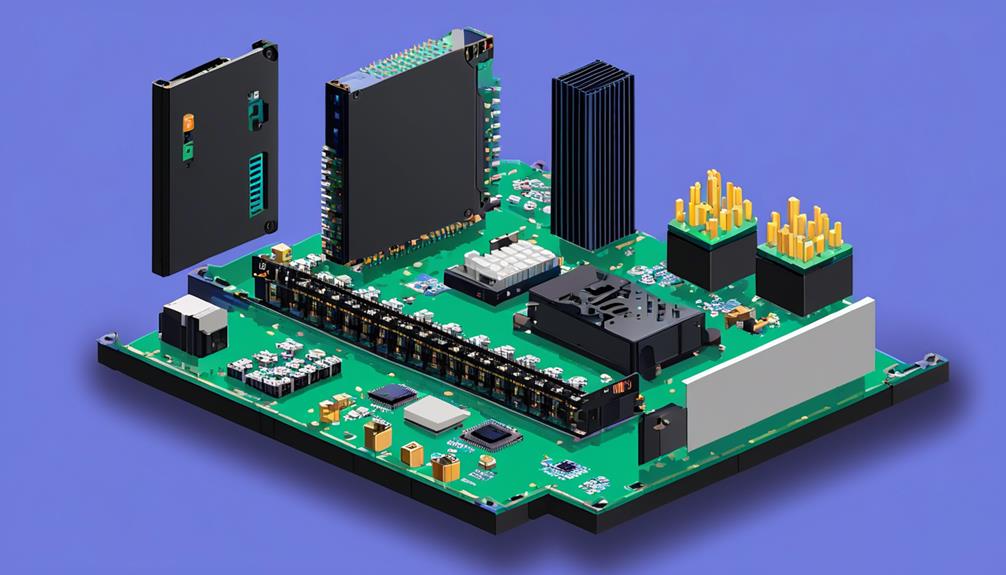
Rugged computer hardware requirements for edge computing encompass durability, compactness, storage capacity, connectivity options, and a wide power range. When it comes to edge computing, the hardware needs to be able to withstand harsh and volatile environments. Rugged edge computers are specifically designed to meet this requirement, offering high durability and protection against extreme temperatures, humidity, dust, and vibrations.
In addition to durability, compactness is another crucial factor for rugged edge computers. These devices are often deployed in space-constrained environments at the edge of the network, such as manufacturing floors or outdoor locations. Therefore, their size must be optimized to fit in these limited spaces while still providing the necessary processing power.
Storage capacity is also a critical requirement for rugged edge computers. As edge computing brings data closer to the source, these devices need to have sufficient storage capacity to handle the large volume of data generated by edge devices such as sensors, smart cameras, and IoT devices. This enables real-time analysis and reduces the need for data transmission over the network, reducing latency and network congestion.
Connectivity options are essential for rugged edge computers to seamlessly integrate with various devices and communication protocols. They should support a wide range of connectivity options, including wired and wireless interfaces, to enable smooth data transfer and communication between edge devices and the central infrastructure.
Lastly, rugged edge computers need to operate in diverse power supply environments. They should have a wide power range to accommodate different power sources, ensuring uninterrupted operation even in fluctuating or unstable power conditions.
Security Considerations for Edge Computing Hardware
Security considerations play a crucial role in the implementation and deployment of edge computing hardware. As edge devices become more prevalent and handle sensitive data, it is essential to address potential security vulnerabilities. Here are some important security considerations for edge computing hardware:
- Physical Security: Edge devices should be physically secure to prevent unauthorized access or tampering. This can be achieved through measures such as locked cabinets, surveillance cameras, and access control systems.
- Authentication and Authorization: Proper authentication and authorization mechanisms should be implemented to ensure that only authorized users and devices can access the edge computing hardware. This can include methods such as multi-factor authentication, certificates, and access control lists.
- Data Encryption: Data at rest and in transit should be encrypted to protect it from unauthorized access. Encryption algorithms and protocols should be carefully chosen and implemented to ensure the highest level of security.
- Secure Communication: Secure communication protocols, such as Transport Layer Security (TLS), should be used to protect data transmission between edge devices and other components in the edge computing infrastructure. This prevents eavesdropping and data tampering.
- Firmware and Software Updates: Regular firmware and software updates should be applied to edge devices to address security vulnerabilities and ensure that the latest security patches are in place.
Certification Requirements for Edge Computing Hardware
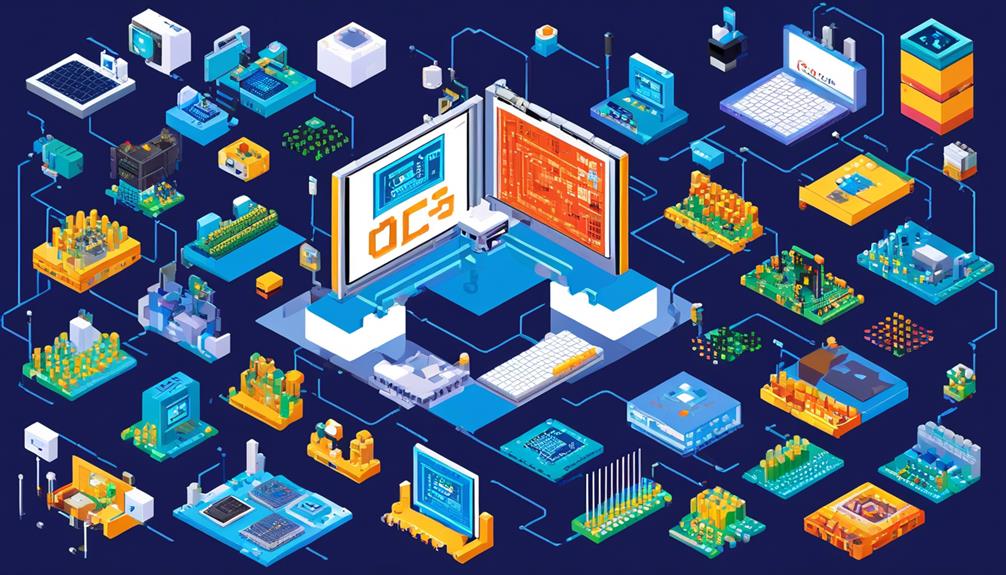
Certification requirements for edge computing hardware encompass hardware specifications, performance benchmarks, and testing as well as security and compliance standards. These requirements ensure that edge computing hardware meets industry standards and regulations, ensuring reliability, durability, and performance in diverse environments.
Meeting certification requirements is crucial for ensuring the interoperability, security, and quality of edge computing hardware.
Hardware Specifications for Certification
Edge computing hardware undergoes rigorous testing to meet industry standards and ensure interoperability and reliability in edge computing systems.
When it comes to hardware specifications for certification in the edge computing space, there are several key considerations. These include the different types of edge computing hardware used, the amounts of data that the hardware must handle, and the storage drives (HDDs or SSDs) that are required.
To meet certification requirements, edge computing hardware must demonstrate durability, ruggedness, and suitability for harsh environments. Power efficiency and reliability under extreme temperatures and vibration are also important factors.
Compliance with these certification requirements ensures that edge computing systems can operate effectively and reliably in diverse environments, providing the necessary computing power and storage capabilities for edge applications.
Performance Benchmarks and Testing
Performance benchmarks and testing play a crucial role in ensuring the effectiveness and reliability of edge computing hardware.
Edge computing, with its focus on bringing compute and storage capabilities closer to the source of data generation, requires hardware that can handle diverse workloads and deliver low-latency processing.
Hardware performance benchmarks assess the speed, reliability, and efficiency of edge devices and servers under real-world conditions. These benchmarks evaluate the ability of edge computing hardware to handle different types of workloads, data processing, and real-time analytics.
Certification requirements for edge computing hardware ensure conformity to industry standards and compatibility with edge computing applications.
Security and Compliance Standards
As edge computing continues to evolve, ensuring security and compliance standards becomes paramount for the certification of edge computing hardware. Here are the key requirements for certification:
- Compliance with industry-specific regulations like HIPAA, GDPR, or ISO 27001 to protect sensitive data.
- Meeting security certifications such as Common Criteria (ISO/IEC 15408) to ensure adherence to rigorous security standards.
- Adhering to data protection regulations like FIPS 140-2 for cryptographic modules to safeguard data integrity.
- Complying with industry-specific safety and reliability standards like IEC 62443 for industrial automation systems.
- Meeting environmental standards like RoHS and WEEE to ensure sustainability and eco-friendliness.
Frequently Asked Questions
What Hardware Is Used in Edge Computing?
Edge computing hardware is crucial for processing data near devices and sensors, reducing latency and improving privacy, security, scalability, and cost savings.
Different types of devices, such as servers, processors, switches, and routers, are used to enable effective edge computing.
Choosing the right hardware is essential to meet edge computing requirements.
While there are pros and cons to using edge computing hardware, it plays a significant role in real-time data processing and is particularly useful for low-power IoT devices.
What Is the Purpose of Edge Computing in Iot?
The purpose of edge computing in IoT is to address the limitations of centralized data centers by processing client data at the periphery of the network. This approach offers several benefits, including reduced latency, improved performance, and lower bandwidth costs.
Edge computing enables real-time business insights and supports critical operations in inhospitable environments. It also reduces reliance on cloud services.
However, implementing edge computing in IoT comes with challenges, such as security considerations and the need for scalable edge computing architectures.
Future trends include advancements in edge computing technologies and increased adoption in various industries.
What Is Edge Processing in Iot?
Edge processing in IoT refers to the ability to perform data processing and analysis at the edge of the network, close to the data source. It offers several benefits, such as reduced latency, improved real-time decision making, and enhanced security.
Compared to cloud computing, edge processing allows for faster data processing and enables real-time insights without relying on a centralized data center. Edge computing architectures for IoT devices involve deploying computing resources closer to the devices, while edge analytics help in extracting valuable insights from the data.
However, implementing edge processing in IoT comes with challenges. These include connectivity issues, limited resources, and the need for robust security measures.
What Are the Components of Iot Edge?
The components of IoT edge include:
- Connectivity mechanisms
- Sensors for data collection
- Gateways for data transmission
- Edge devices for local processing
- Security measures to protect the system
Data processing at the edge enables real-time analysis and decision-making. The integration of these components facilitates efficient and effective edge computing in IoT systems.

